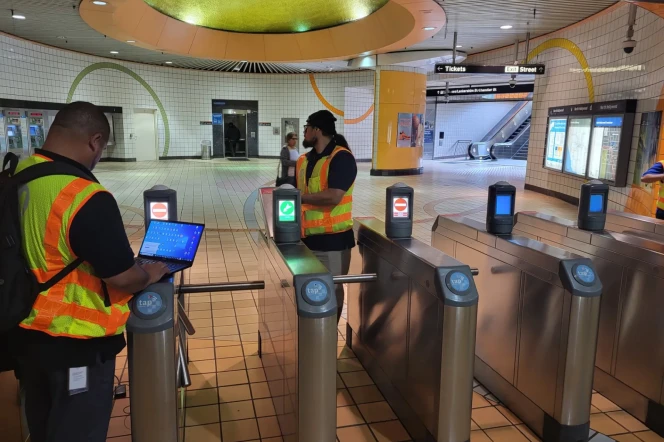With our free press under threat and federal funding for public media gone, your support matters more than ever. Help keep the LAist newsroom strong, become a monthly member or increase your support today.
Wyoming Schools Get Poor Report Card For Native American Absenteeism

Craig Ferris begins his morning with an unscheduled stop in his black suburban.
"I usually have to come get these guys at least once a week," Ferris says, honking his horn.
Ferris is best known around here as the basketball coach who's led Wyoming Indian High School to four state championships. But he also works for the elementary school as what's called a "home-school coordinator."
The job seems to be equal parts mailman, social worker and taxi driver.
"It's kind of like a truant officer. My job is to make sure the kids who aren't coming to school — find out why, and what we need to do to get them to school," Ferris says.
Third-grader Talissa Cadotte missed the school bus this morning.
"My dad forgot to wake me up, so he called this guy," Cadotte says.

Ferris's school district on the Wind River Reservation had the second-lowest attendance rate in Wyoming last year.
"It's one of the top things that really plague a kid's development in school, because if they're not in school, they're not learning," he says.
Ferris is off to deliver notices to parents whose children have missed too many school days. When kids have five, 10 or 15 unexcused absences, he shows up at their door with a letter.
Parents who can't get their kids to school can be charged with educational neglect and face probation and fines.
"A lot of parents know they're not sending their kids to school. They know why I'm visiting, so they're not going to answer the door," Ferris says.
Still, others are happy to see him — like Rickina Armour.
"He is the coach, the best coach we have," Armour says.
She says hearing him knock on the door is a good thing.
"Everybody knows I coach the high school team, so when I deliver letters, they're always asking me about the boys and the team and how we're gonna do this year. I think that kind of helps me out because most people know who I am," Ferris says.
Wyoming isn't alone facing this problem. Arizona, Montana and Oklahoma all see similarly high absentee rates for Native students.
"Nationally, what we see, for Native students at fourth grade, 29 percent are chronically absent. Eighth grade, 30 percent. That's pretty high," says Cecelia Leong, who works with Attendance Works , a national initiative to reduce absences.
That's 10 percentage points higher than for white students, and those gaps start early.
An Attendance Works report found that Native kindergartners miss twice as many days as their white peers. Leong says those gaps in attendance become gaps in achievement.
"One of the consequences of early chronic absence is, ultimately, a high dropout rate for students," Leong says.
On the Wind River Reservation, where just half of all high school students graduate in four years, Coach Craig Ferris is knocking on doors to track down some kids who haven't been at school all week.
He learns they're visiting a family member in the hospital. Ferris says illness is a big reason many of his kids miss school. So is transportation. Another factor is mistrust, bred by generations of mistreatment of Native Americans in schools — both public and private.
"You really see where people — parents and families — are struggling. It might not look they're trying, but they're doing what they can. What's that saying? Doing what they can with what they have. It's a tough life out here," Ferris says.
Intervention efforts like these are needed now more than ever. Unlike other student groups, Native Americans have seen little improvement in reading and math scores over the past decade.
Copyright 2024 Wyoming Public Radio








